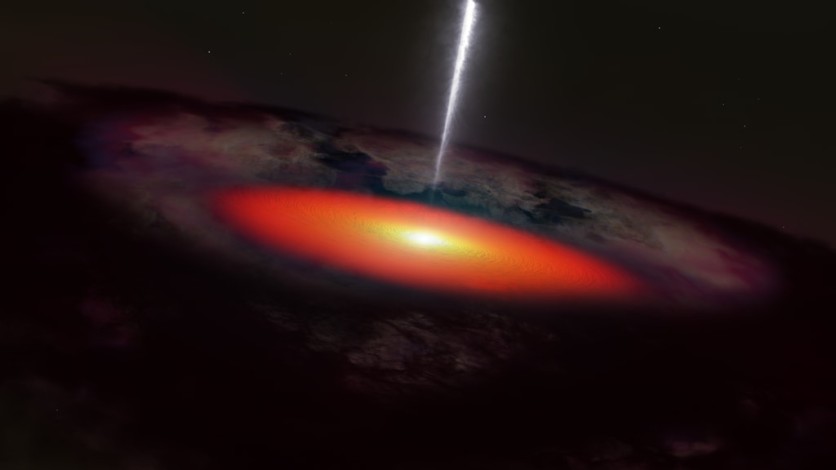NASA and Japan's JAXA XRISM mission, which commenced its scientific operations in February, has made significant strides in unraveling the mysteries surrounding the supermassive black hole situated at the heart of galaxy NGC 4151.

Resolve Examines a Supermassive Black Hole
Brian Williams, NASA's project scientist for the XRISM mission at the Goddard Space Flight Center in Maryland, described how XRISM's Resolve instrument meticulously examined the region surrounding the black hole.
By capturing a detailed spectrum, Resolve detected peaks and dips akin to chemical fingerprints, unveiling insights into the elemental composition and the behavior of matter as it approaches the black hole.
XRISM, led by JAXA in collaboration with NASA and contributions from the ESA, was launched on September 6, 2023. Notably, Resolve, the mission's microcalorimeter spectrometer, was developed jointly by NASA and JAXA.
Spiral galaxy NGC 4151 is approximately 43 million light-years away in the Canes Venatici constellation. It harbors a supermassive black hole with a mass exceeding 20 million times that of the Sun.
According to NASA, NGC 4151's active nature, characterized by an unusually bright and variable central region, distinguishes it.
Gas and dust form an accretion disk as they fall toward the black hole, and they heat up due to gravitational and frictional forces, giving rise to the observed variability.
Some of this material generates twin jets of particles that shoot out from either side of the disk at near-light speeds. Afterward, a donut-like cloud of material named torus envelopes the disk.
Read Also : NASA James Webb Space Telescope May Have Found Atmosphere on 'Too Hot to be Habitable' Exoplanet
Closest Active Galaxies to Astronomers
NASA adds that NGC 4151 is among the closest active galaxies known to astronomers.
Previous missions, such as the Chandra X-ray Observatory and the Hubble Space Telescope, have scrutinized this galaxy to glean insights into the interactions between black holes and their surroundings and understand their evolution over cosmic epochs.
The galaxy's pronounced brightness in X-rays made it an ideal initial target for XRISM. The spectrum captured by Resolve unveils a distinct peak around 6.5 keV, corresponding to an iron emission line.
This observation underscores the role of X-rays emanating from hot regions in active galaxies near the black hole.
According to NASA, X-rays reflecting off cooler gas in the accretion disk cause iron to fluoresce, resulting in a specific X-ray signature that helps portray the dynamics of the disk and the eruptions near the black hole.
Furthermore, the spectrum depicts several dips around 7 keV, attributed to iron in the torus. In this case, the dips are caused by X-ray absorption instead of an emission, which is indicative of the cooler nature of the material in the torus compared to that in the disk.
Notably, the radiation observed by XRISM is approximately 2,500 times more energetic than visible light.
It is also worth noting that XRISM can detect more than just iron; depending on their origin, it can identify elements such as sulfur, calcium, argon, and many more.
These elements ultimately provide unique insights for astrophysicists into the various cosmic phenomena found across the X-ray sky.
Related Article : NASA James Webb Space Telescope Maps the Weather of Hot Gas-Giant Exoplanet 280 Light-Years Away

ⓒ 2025 TECHTIMES.com All rights reserved. Do not reproduce without permission.




